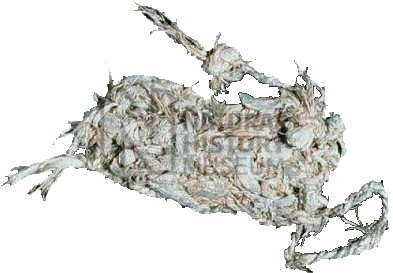I saw reference to Franlin’s asbestos purse in Abratt, R. P., D. A. Vorobiof, et al. (2004). “Asbestos and mesothelioma in South Africa.” Lung Cancer 45, Supplement(0): S3-S6. , futher information from www.ingenious.org.uk . The image deriveds from from the Natural History Museum and they indicate the material is tremolite.
Money to burn: Benjamin Franklin’s asbestos purse

When 19-year-old Benjamin Franklin arrived in London in 1724, he brought a small pocket purse made of asbestos. Short of funds, Franklin contacted Hans Sloane, a noted collector of curiosities, and offered to sell it. Sloane was later President of the Royal Society of London [suceeded Issaac Newton], and in 1754 passed his collection to the British Museum [this was part of the collection that went to the Natural History Museum], where the purse remains. The original specimen label states the purse was from ‘Mr Franklyn, from New England’. Less clear is where the asbestos originated. Though it has been suggested that the purse came to America with an immigrant, its American provenance is equally probable. It could have been made from Pennsylvania ‘mountain flax’, or salamander stone as asbestos was known in the colonial period because of a long-standing belief that the amphibian could withstand fire. It more likely came from Newbury, near Boston, where agriculturists digging for lime occasionally uncovered asbestos. Occurring as easily separable aggregates with foot-long fibres, Newbury asbestos was used to make lamp wicks in nearby weaver colonies. A century after Sloane’s purchase, asbestos was no longer a precious curiosity, but a potentially lucrative industry. More than 70 deposits of the mineral were recorded in the United States. The first large-scale mining operations began in 1818 after James Pierce discovered asbestos at Quarantine, Staten Island, New York.
